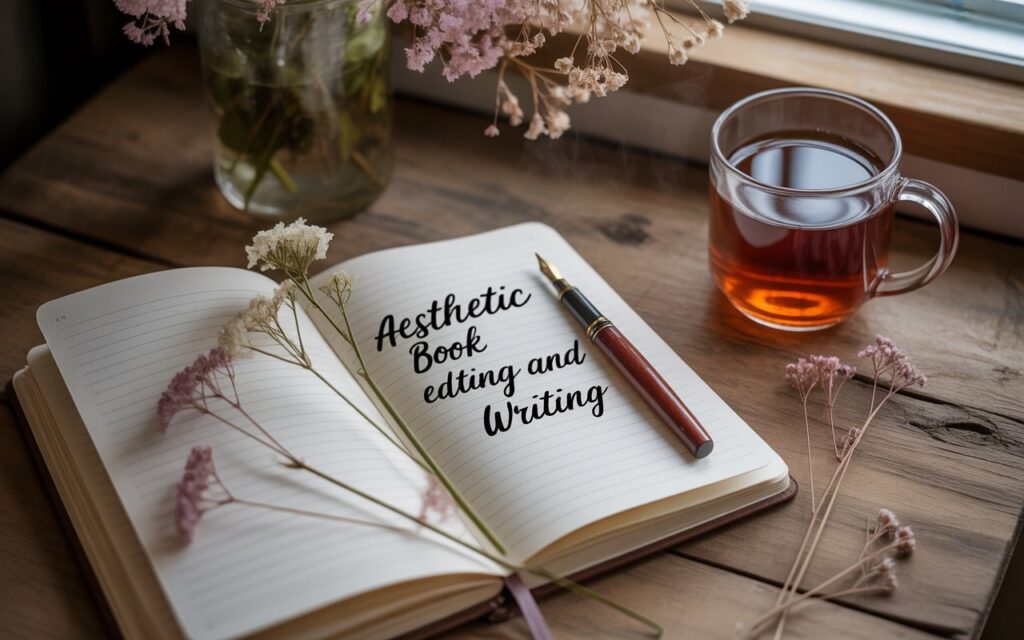Publishing a book is a huge achievement. It’s the moment when your hard work, late nights, and creative energy finally take shape in the form of a complete manuscript. But here’s the truth most first-time authors don’t realize: finishing your first draft is just the beginning. If you want readers, publishers, or even agents to take your work seriously, editing is non-negotiable. Editing is the process that transforms your manuscript from “just another draft” into a polished, professional book and editing service that stands up in today’s competitive market.
Still, many authors get stuck at this stage because they don’t know which type of editing they need. After all, editing isn’t just about catching typos—it’s about refining structure, tone, flow, and readability. And since every genre has unique demands, choosing the wrong type of editing can waste both time and money.
In this guide, we’ll walk you through everything you need to know about editing:
- The main types of editing and how they differ
- Which editing style works best for each genre
- How to match editing to your publishing goals
- When to combine services (and when not to)
- What to do before and after editing
- Pricing insights to help you budget
By the end, you’ll be able to confidently decide which editing package is right for you whether you’re publishing your first novel, writing nonfiction, or preparing a textbook.
What Does “Editing” Really Mean?
When you hear the word editing, you might think it just means fixing grammar mistakes or correcting spelling errors. But professional editing goes far deeper. It’s about helping your story shine while keeping your voice intact.
At its core, editing ensures three things:
- Clarity: Your ideas are presented in a way that makes sense to readers.
- Consistency: Grammar, spelling, and formatting follow a standard throughout.
- Engagement: Your writing keeps readers hooked from beginning to end.
To achieve these, editors use different levels of editing. Let’s break them down.
1. Copy Editing – The Technical Polish
Copy editing is all about accuracy and precision.
A copy editor carefully checks for:
- Grammar and spelling errors
- Correct word usage
- Consistency in names, dates, and terminology
- Adherence to style guides (like The Chicago Manual of Style)
For example, if you’ve written a business book, your copy editor will make sure your explanations are clear, your terms are consistent, and your writing looks professional.
⏳ Timeline: Around 7–9 business days for a standard manuscript.
📌 Best For: Nonfiction writers, academic authors, and professionals publishing guides or textbooks.
2. Line Editing – The Flow Doctor
Line editing digs deeper than copy editing. Instead of just looking at correctness, line editing focuses on how your writing feels to the reader.
A line editor checks:
- Sentence structure and rhythm
- Transitions between ideas and paragraphs
- Tone and style consistency
- Dialogue flow (for fiction)
Think of line editing as a tune-up for readability. If copy editing ensures your book is correct, line editing ensures it’s compelling.
For instance, if you’re writing a novel, a line editor might suggest shortening a long, confusing sentence or rewriting dialogue so it sounds more natural.
⏳ Timeline: Usually 8–10 business days.
📌 Best For: Fiction writers, memoirists, and children’s book authors.
3. Proofreading – The Final Safety Net
Proofreading is the last step before publication. It’s your manuscript’s “final polish.”
Proofreaders look for:
- Typos
- Punctuation mistakes
- Capitalization errors
- Minor formatting issues
It doesn’t involve big changes to your content it’s about catching those last little errors that could distract readers or earn you a bad review.
Imagine spending two years writing your book, only for Amazon reviewers to point out that “Chapter Three has a typo.” Proofreading prevents this.
⏳ Timeline: About 6–8 business days.
📌 Best For: Every book but only after deeper edits are complete.
Which Editing Style Fits Your Genre?
Different genres demand different approaches. Here’s how editing typically aligns with major book categories:
- Fiction (novels, short stories): Focus on line editing to strengthen narrative flow, dialogue, and character arcs. Proofreading comes after.
- Nonfiction (biographies, self-help, business books): Copy editing is essential for accuracy, clarity, and professionalism. Proofreading ensures polish.
- Children’s Books: Simplicity is key, but storytelling still matters. Line editing ensures engagement, while copy editing checks age-appropriate clarity.
- Academic/Technical Writing: Copy editing ensures accuracy, formatting, and adherence to academic standards.
- Cookbooks/Art Books: Proofreading prevents embarrassing mistakes like missing steps or mislabeled captions.
Matching Editing to Your Publishing Goals
Editing isn’t one-size-fits-all. Your publishing path and experience level also influence what kind of editing you should invest in.
If you’re a first-time author:
Start with line editing. It gives you feedback on storytelling and structure while also improving readability. It’s like having a writing coach who makes your work stronger.
If you’re an experienced writer:
You may not need structural help. Copy editing will polish your manuscript and ensure professionalism.
If you’re self-publishing:
Invest in the full package: line editing + copy editing + proofreading. Self-published books are judged against traditionally published ones. Readers won’t forgive sloppy errors.
If you’re submitting to agents or publishers:
Prioritize line editing and copy editing. Agents expect manuscripts that are polished and professional, even if they’ll later go through more editing in-house.
If you’re on a tight budget:
At minimum, get proofreading. It won’t fix everything, but it will catch glaring mistakes that could hurt your credibility.
When to Combine Editing Services
Sometimes, your book may need more than one type of editing. Here are smart combinations:
- Line Editing + Copy Editing: Perfect for authors who need both structural improvements and technical polish.
- Copy Editing + Proofreading: Ensures your manuscript is not only accurate but also clean before printing.
- Line Editing + Proofreading: Useful if you’re confident in grammar but want storytelling improvements plus a final polish.
However, avoid combining everything at once if your draft is still rough. Do one stage, revise, then move to the next.
How to Prepare for Professional Editing
Before sending your manuscript to an editor, you’ll get more value if you:
- Self-edit first. Read through your book multiple times. Fix obvious errors.
- Use digital tools. Grammarly or ProWritingAid can help with basic mistakes.
- Ask beta readers. Fresh eyes can point out confusing sections you may have missed.
- Check consistency. Make sure tenses, voices, and character details are aligned.
Doing this ensures your editor spends time on improving your book instead of correcting simple mistakes.
What Happens After Editing?
Editing is just one step in the publishing process. After your manuscript is edited, you’ll move to:
- Formatting: Preparing your book for print or digital release.
- Cover Design: A professional, genre-appropriate cover that attracts readers.
- Publishing & Distribution: Uploading your book to platforms like Amazon, Apple Books, or IngramSpark.
Remember: Editing bridges the gap between writing and publishing. Without it, your book risks being overlooked.
How Much Does Editing Cost?
Editing services are often priced per word. While prices vary across providers, here’s an average breakdown (based on BookBaby’s pricing as of 2025):
- Proofreading: $0.015 per word
- Copy Editing: $0.025 per word
- Line Editing: $0.04 per word
Example: A 60,000-word manuscript would cost approximately:
- $900 for proofreading
- $1,500 for copy editing
- $2,400 for line editing
Yes, editing is an investment but it’s one that directly impacts your book’s success.
FAQs About Book Editing
Q1: Can I skip editing if I use writing software like Grammarly?
👉 No. Software helps catch surface-level errors but can’t improve storytelling, pacing, or readability the way a professional editor can.
Q2: Should I hire a freelance editor or use a service like BookBaby?
👉 Freelance editors can be great if you find someone trustworthy, but editing services provide standardized pricing, experienced professionals, and reliability.
Q3: How do I know if my manuscript is ready for editing?
👉 If you’ve finished at least one full draft, revised it yourself, and had beta readers review it, your book is ready for professional editing.
Q4: Do I need all three types of editing?
👉 Not necessarily. It depends on your book’s genre, your goals, and how polished your draft already is.
Q5: Is editing worth the cost for self-publishing?
👉 Absolutely. Self-published authors are competing directly with traditionally published books. A poorly edited book will damage your credibility and hurt sales.
Final Thoughts
Editing isn’t just about fixing errors it’s about elevating your book to its fullest potential. The right editing service depends on your genre, your publishing goals, and your stage in the writing journey.
- Fiction needs flow and character depth → Line editing.
- Nonfiction needs authority and clarity → Copy editing.
- Every book needs proofreading before publication.
If you’re self-publishing, don’t cut corners. A professional edit can mean the difference between a book that gets ignored and one that builds your reputation as an author.
So, ask yourself: Where is your manuscript right now? What are your goals for publishing? And how much are you willing to invest in your writing career?
Once you know the answers, choosing the right editing service becomes much simpler.
Because in the end, editing isn’t just about polishing words it’s about making sure your story connects with readers in the way you always dreamed it would.




